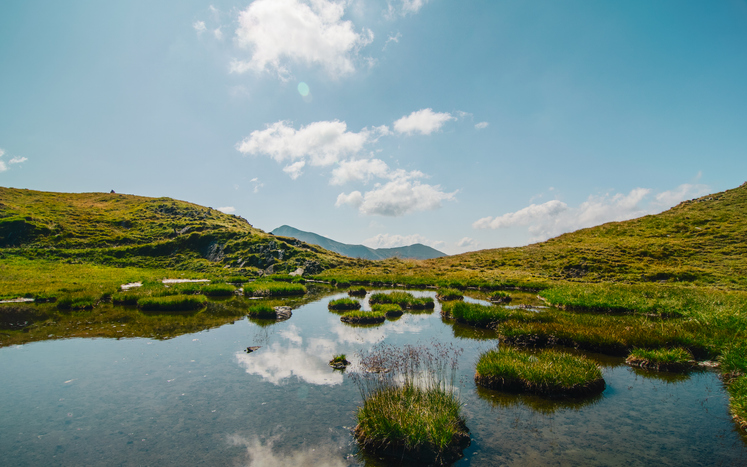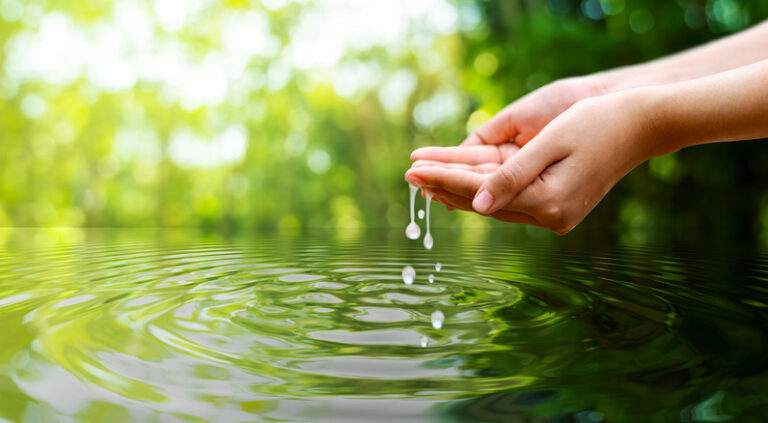By Mario Carr
A strong economy needs a healthy watershed. One municipality that understands this all too well is Hamilton, Ontario.
Clean-up projects to reverse more than a century of abuse along Hamilton’s Lake Ontario shorelines are attracting wildlife, people, and dollars to the city, which has helped to boost the local economy. For example, waterfront properties in Hamilton have doubled in value from 2003 to 2013.
This is just the start. Hamilton plans to develop its 42-acre waterfront with a $600-million private sector investment to build 1,200 to 1,600 residential units and 16,000 square metres of commercial space. The growth in the local economy in the form of wages, services, and supplies will be huge. Up until the 1990s, the waterfront surrounding Hamilton Harbour was fenced and off limits to the public. The city has since turned it into a series of parks for everyone to enjoy. Now the community and tourists are enjoying a trail system that links 28 per cent of the harbour waterfront with green spaces, restaurants, and shops. Future plans will restore public access to 35 per cent of the shoreline.
“Now we’re at a tipping point for large-scale commercial and residential developments because of the investments we’ve made in public space,” said Chris Phillips, the City of Hamilton’s planning and economic development department senior advisor. “It’s estimated the build out will generate $7 to $10 million a year in net new property taxes on land that today achieves
next to nothing.”
Phillips added that, “Council has committed $60 million over the next four years to bring the area up to development-ready status. The notion is that we will pay for that back with taxes and uplift. The taxes I’m talking about are solely related to the development. There will also be a spill-off factor of value increases in the broader neighbourhood.”
Prior to pollution laws, industrial waste was dumped directly into the harbour. The harbour also received discharges from three wastewater treatments plants and runoff from urban areas. Over the years, sediment contaminated by metals, polychlorinated biphenyls, and other hazardous chemicals have accumulated in the harbour.
Because of this ecological damage, Hamilton Harbour was one of 43 Areas of Concern identified by the Great Lakes Water Quality Agreement between Canada and the United States. A document called the Remedial Action Plan was created in 1992, laying out a plan to systematically undo the years of abuse and clean the harbour. A community not-for-profit group called the Bay Area Restoration Council was formed in the ’90s to promote clean-up projects and to monitor and assess the implementation of the plan by governments, organizations, and the private sector. Major accomplishments so far include upgrades to the Skyway and Woodward Wastewater Treatment Plants, and a $20.6-million rehabilitation of Windermere Basin. In 2013, the 25-hectare plot of industrial land was reclaimed, restoring a local ecosystem and providing natural wildlife areas and parklands for recreational use.
It’s anticipated the harbour will be delisted as an Area of Concern by 2020. When this happens, there could be close to a billion-dollar benefit to the local economy according to a 2007 York University study called the Bensim Report. Residents are already seeing the efforts of the Remedial Action Plan. Before this clean-up started, Hamilton’s shorelines were an ecological disaster with rotting fish and dirty smelling
water. Rather than a place to avoid, it is now attracting tourists, residents, and businesses.
“It’s improved the image of the city overall and you’re seeing a lot more people and businesses
locating here,” said Sandi Stride, the CEO of Sustainable Hamilton. “I think cleaning up the
harbour has a strong ripple effect throughout the whole area. It has brought a lot more tourism
[and] opened up recreation opportunities for people to experience the water first. The
waterfront is an important part of our city.”
<sub>Paradise rediscovered
Hamilton’s Royal Botanical Gardens has also done wonders to revitalize its portion of Lake
Ontario shoreline in the Cootes Paradise Marsh. The work is bringing back fish populations and
aquatic and terrestrial life, while increasing the number of visitors who are stimulating the local
economy.
Named after an 18th century British naval officer, Captain Thomas Coote, the marsh was once
known for its abundant wildlife. For the next two centuries, wildlife decreased and the marsh
turned into a dark brown polluted pond.
The cause of the mess was improperly treated sewage, invasive carp destroying river channels,
and land-use changes creating massive erosion. Between the carp and sewage, the marsh was
destroyed. Since 1949, attempts were made to revitalize the marsh without any luck.
During the ’90s, volunteers planted 50,000 aquatic plants in the hopes of rehabilitating the
marsh, which was almost barren of any vegetation. Then something happened.
“Changes started to be noticed from degraded to actually getting better,” said Tys Theysmeyer,
the Royal Botanical Gardens’ head of natural areas. “The quality of the water is getting better. It
has a way to go, but it’s going in the right direction.
“We’ve opened up a whole new batch of educational programs and experiences that we didn’t
have before. In the last year, canoeing has taken off with 30 new programs. It’s very popular
now.”
People are also buying canoes because there’s now a local place to paddle.
“This year, we had a big biodiversity festival and a birding festival. These are things that didn’t
occur before,” Theysmeyer said. “It’s becoming the place to go if you want to experience some
life and water.”
Mario Carr is a Burlington, Ontario-based public relations consultant who also writes
about science and nature.








